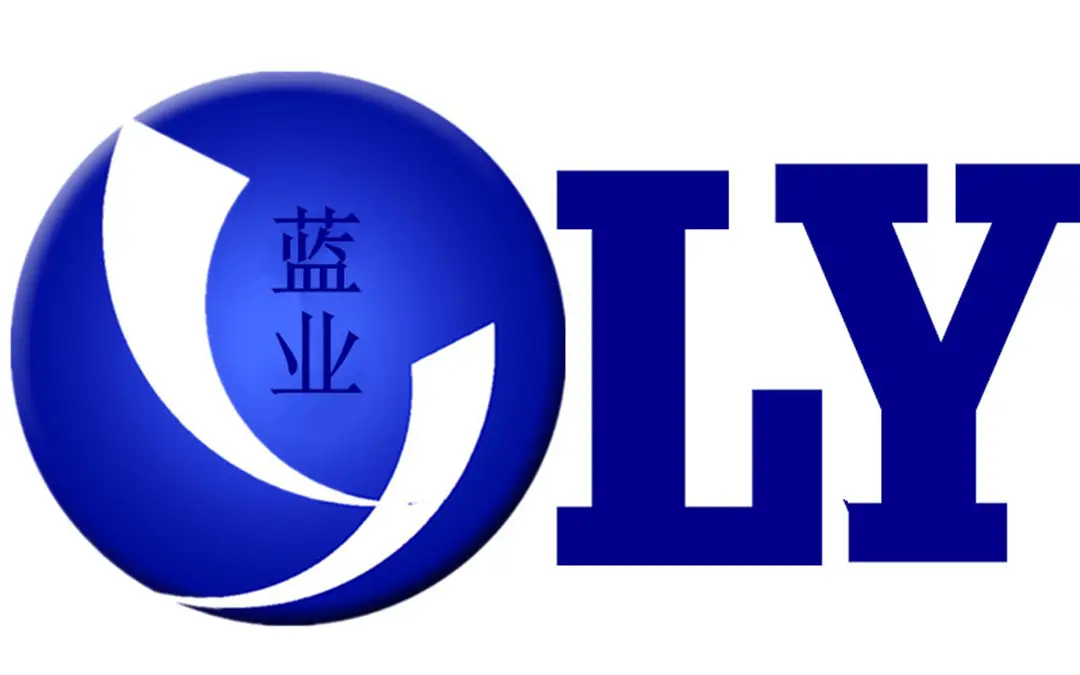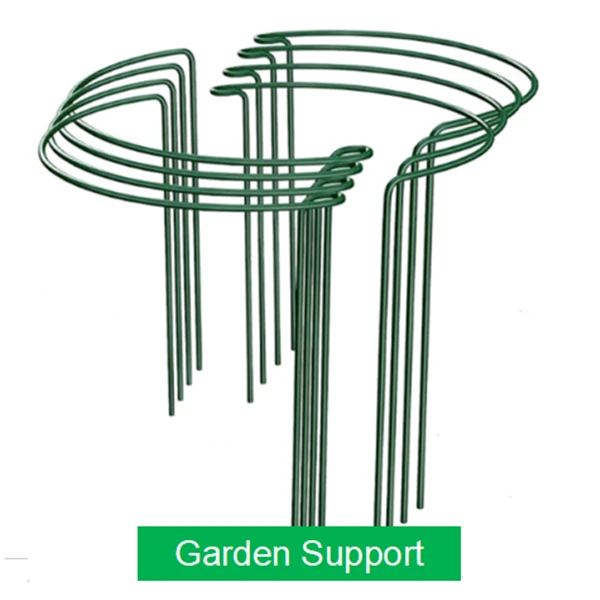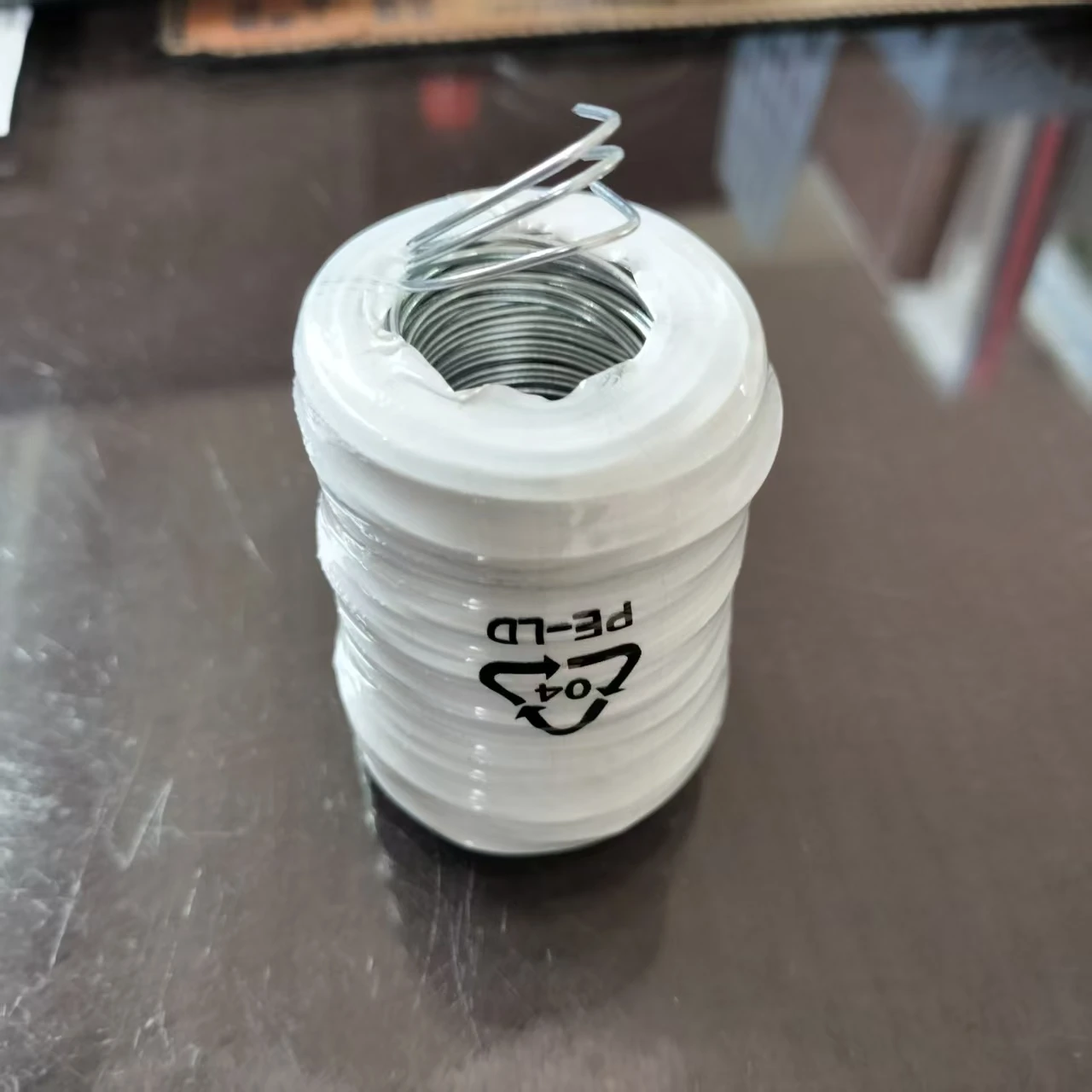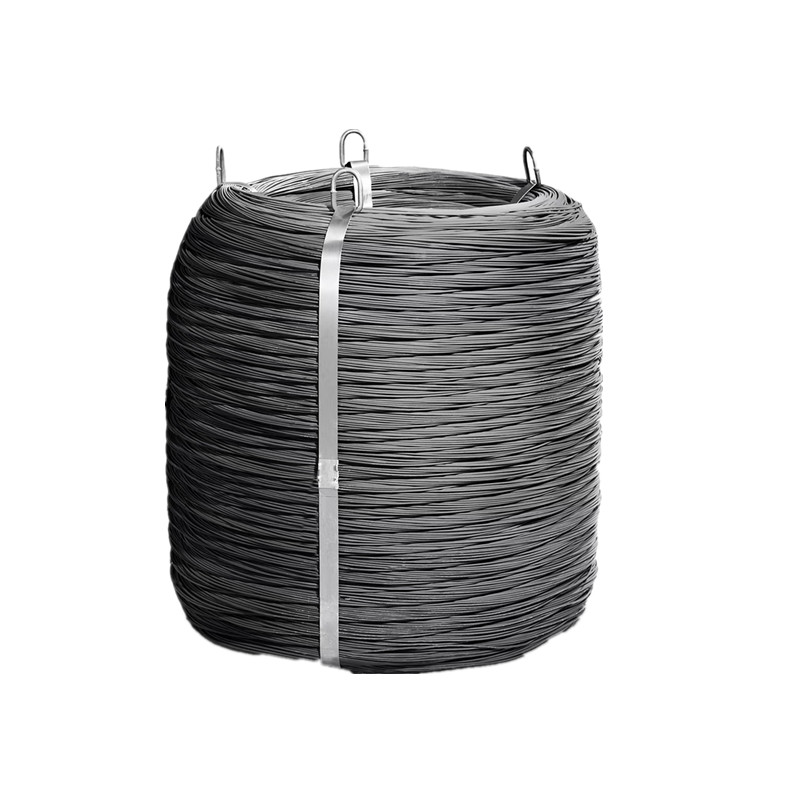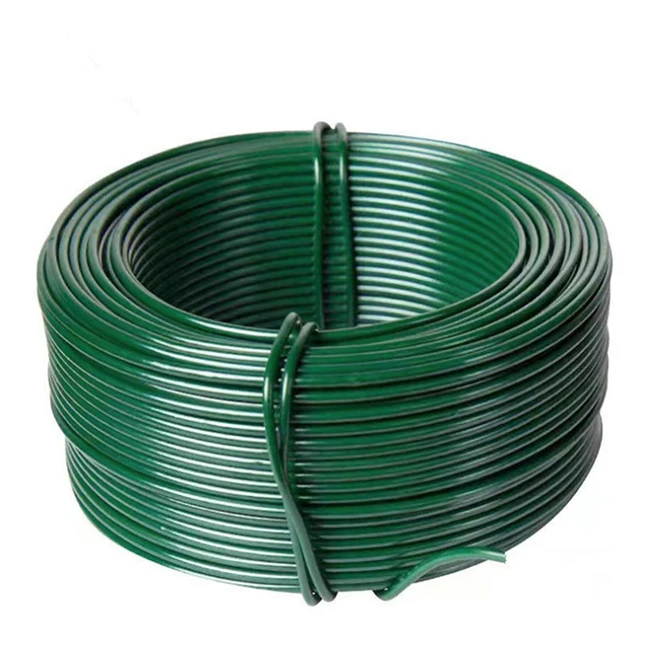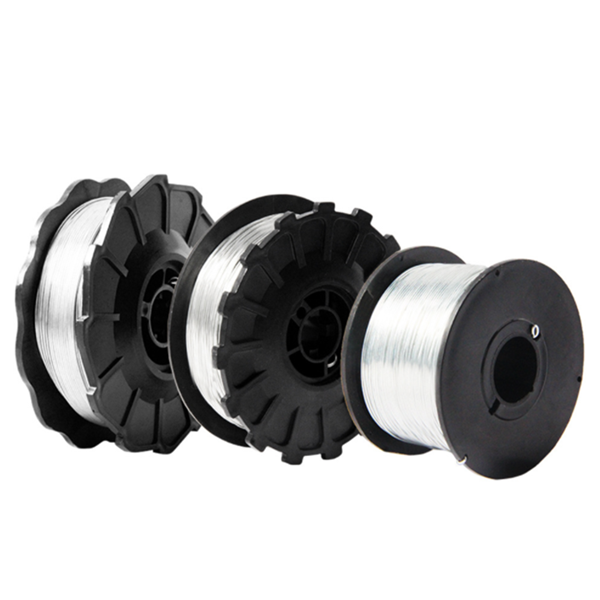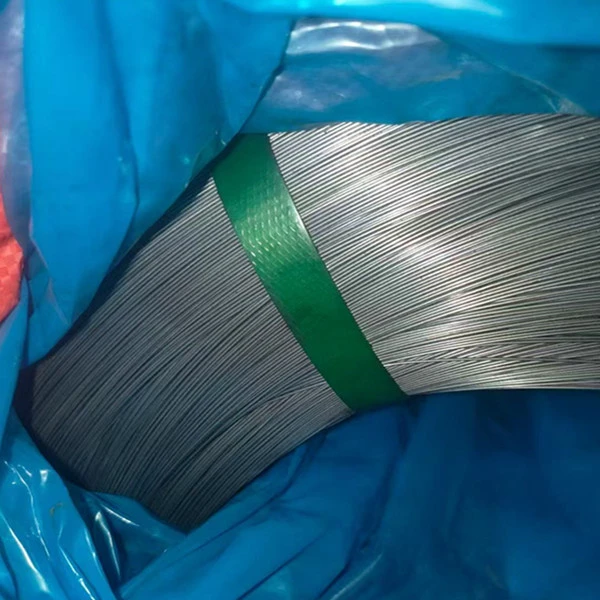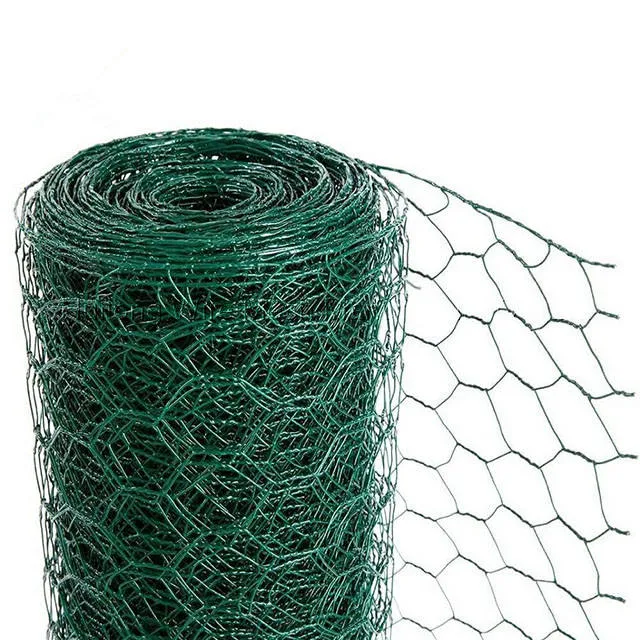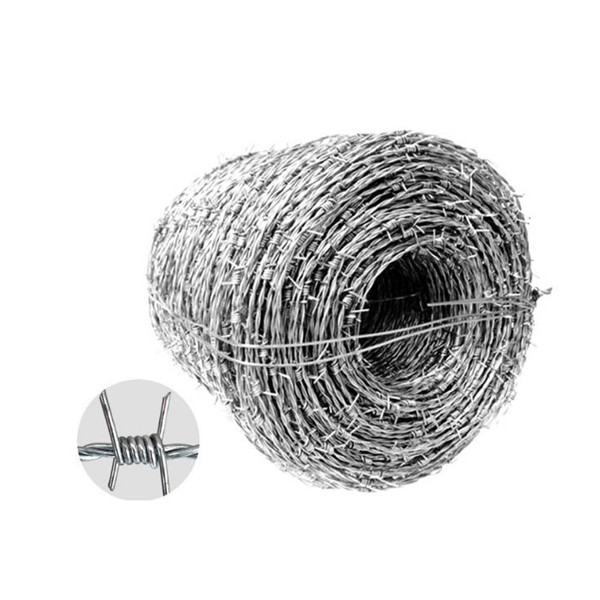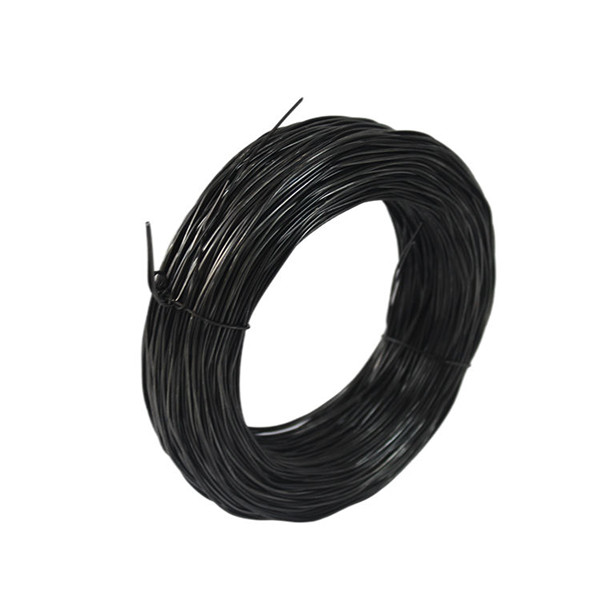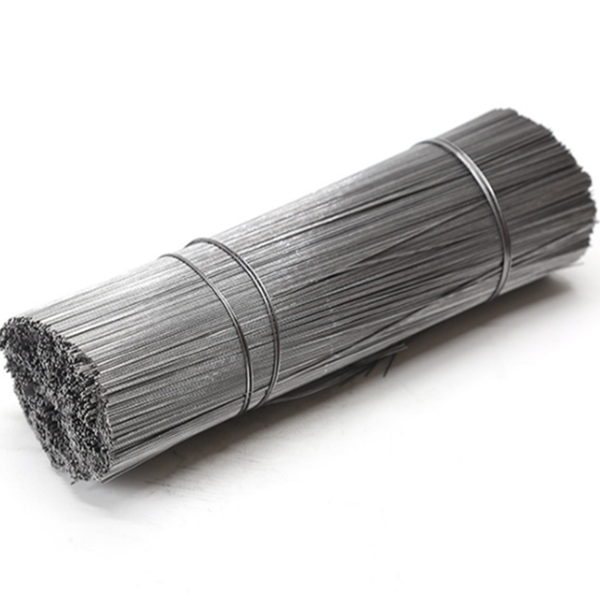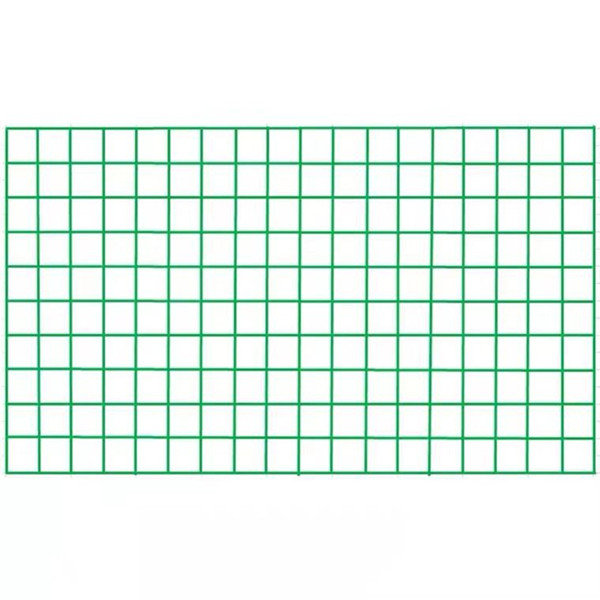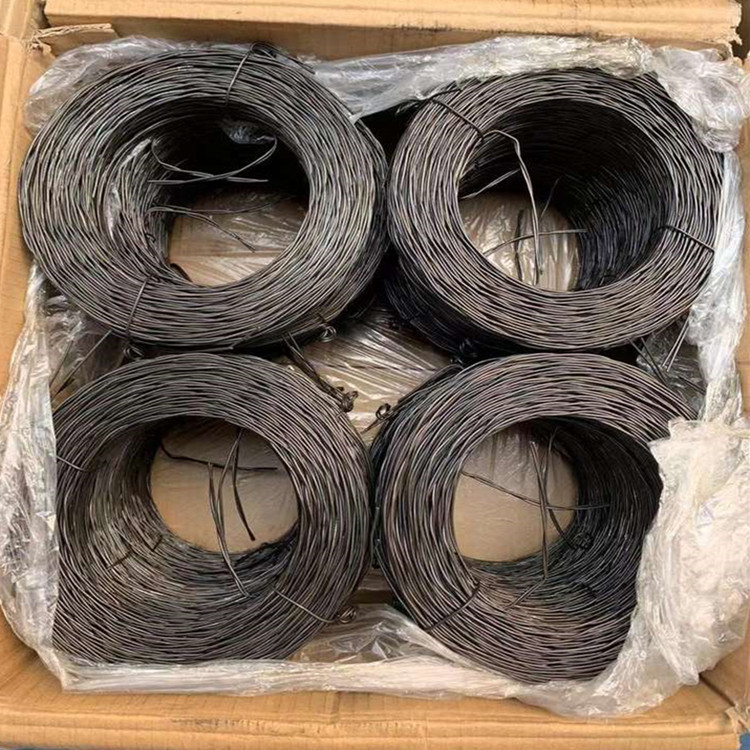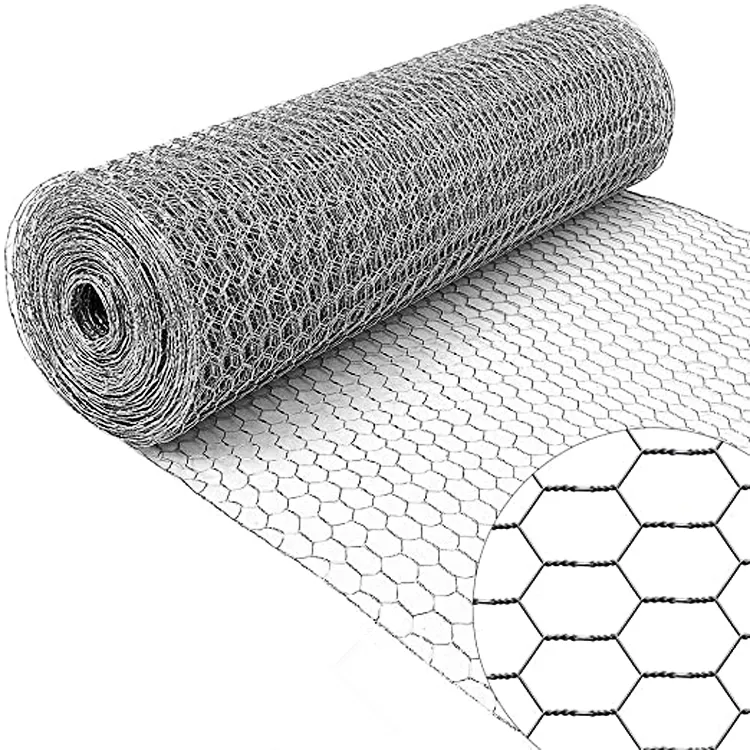The Indispensable Role of Cold-Drawn Steel Wire in Modern Industry
In the vast landscape of industrial materials, cold drawn steel wire stands out as a fundamental component, critical to the integrity and performance of countless products. This specialized material, refined through a precise manufacturing process, offers unparalleled strength, dimensional accuracy, and surface finish, making it indispensable across diverse sectors from construction and automotive to consumer goods. Its applications are broad, ranging from high-performance springs and robust fasteners to the foundational elements of everyday items like bright wire nails.
Specifically, our focus centers on Cold-Drawn Bright Wire Nail Wire, a product meticulously engineered to meet the stringent demands of the nail manufacturing industry. This particular type of wire exemplifies the technical excellence achievable through cold drawing, ensuring that the final nail products possess superior characteristics for a wide array of fastening applications. Its bright, smooth surface and consistent mechanical properties are paramount for efficient nail production and reliable end-use performance. The demand for such precise materials is driven by evolving industry trends prioritizing material efficiency, enhanced structural integrity, and extended product lifecycles, particularly in high-stress applications.
This comprehensive guide delves into the intricate world of cold drawn steel wire, exploring its sophisticated manufacturing process, critical technical parameters, expansive application spectrum, and the distinctive advantages it offers over conventionally produced materials. We aim to provide B2B decision-makers and technical professionals with an in-depth understanding, leveraging industry insights, empirical data, and real-world case studies to underscore the material's strategic importance and our expertise in delivering high-quality solutions designed to meet the most exacting industrial requirements.
The Meticulous Manufacturing Process of Cold-Drawn Steel Wire
The production of cold drawn steel wire is a highly controlled, multi-stage process designed to transform hot-rolled wire rod into a material with significantly improved mechanical properties, superior surface finish, and precise dimensional tolerances. This intricate manufacturing sequence ensures the wire meets the demanding specifications for applications ranging from high-tensile fasteners to intricate spring components and, notably, for the production of high-quality bright wire nails. Understanding each phase is crucial for appreciating the value added to the raw material.
1. Raw Material Selection (Hot-Rolled Wire Rod)
The journey begins with the selection of high-quality hot-rolled steel wire rod. The choice of steel grade – typically low carbon (e.g., SAE 1006, 1008, 1010) for general purpose wires like nail wire, or medium to high carbon for more demanding applications – dictates the final properties. These rods, formed through hot rolling, possess a rough surface and inconsistent diameter, requiring further processing.
2. Surface Preparation: Pickling and Rinsing
Before drawing, the wire rod must be meticulously cleaned to remove mill scale (iron oxides formed during hot rolling) and any surface impurities. This is primarily achieved through chemical pickling, typically using hydrochloric or sulfuric acid. The acid bath effectively dissolves the scale, preventing abrasive damage to the drawing dies and ensuring a smooth surface on the finished wire. Following pickling, the wire is thoroughly rinsed with high-pressure water to remove residual acid and dissolved oxides, preventing corrosion and ensuring coating adhesion.
3. Coating Application
To facilitate the drawing process and protect the wire, a coating is applied. The most common coating is lime, often followed by a phosphate or borax pre-coat. These coatings act as lubricants, reducing friction between the wire and the drawing dies, dissipating heat, and extending die life. For Cold-Drawn Bright Wire Nail Wire, the coating choice is crucial for achieving the desired bright finish and ensuring smooth feeding into nail-making machines.
4. Cold Drawing (The Core Process)
This is the defining stage. The prepared wire is pulled through a series of progressively smaller dies, reducing its diameter and simultaneously enhancing its mechanical properties. Unlike hot rolling or forging, cold drawing occurs at room temperature, which is why it's termed "cold." Each pass through a die plastically deforms the steel, elongating the grains in the direction of drawing, increasing tensile strength and yield strength, and improving surface finish. The specific reduction per pass and the number of passes are carefully controlled to achieve the desired final diameter and mechanical properties. This process significantly improves the metallurgical structure and surface quality, which are paramount for the consistent performance of cold drawn steel wire in various applications, including precise components for the petrochemical industry or durable wire for construction mesh.

Image: Illustrative representation of the cold drawing process, highlighting progressive diameter reduction.
5. Annealing (Intermediate or Final, if required)
Depending on the desired final properties, intermediate annealing might be performed between drawing passes. Cold drawing work hardens the steel, increasing its strength but reducing its ductility. Annealing is a heat treatment process that softens the wire, making it more ductile for further drawing or for applications requiring a softer, more formable wire. For Cold-Drawn Bright Wire Nail Wire, final annealing might be omitted to maintain higher hardness for nail-making, or performed selectively to achieve specific ductility for bending applications.
6. Final Cleaning and Packaging
After the final drawing pass, the wire undergoes another cleaning process to remove any residual lubricants or surface contaminants, ensuring its "bright" finish. This might involve mechanical brushing or a final rinsing. The finished cold drawn steel wire is then carefully spooled onto coils or reels, ready for shipment. Packaging methods are chosen to protect the wire during transit and storage, maintaining its integrity and surface quality until it reaches the customer's manufacturing line.
Unpacking the Technical Specifications and Industry Standards
The performance and reliability of cold drawn steel wire are directly attributable to its precise technical specifications and adherence to stringent industry standards. For B2B applications, understanding these parameters is not just an academic exercise but a critical requirement for ensuring product compatibility, performance, and compliance. Our Cold-Drawn Bright Wire Nail Wire, for example, is engineered to meet or exceed these benchmarks, providing a consistent and reliable feedstock for the production of high-quality bright wire nails and other wire-formed products.
Key Technical Parameters:
- Tensile Strength (UTS): This is the maximum stress the wire can withstand while being stretched or pulled before breaking. Measured in megapascals (MPa) or pounds per square inch (psi), higher tensile strength indicates a stronger wire capable of bearing greater loads. For nail wire, a high UTS ensures the nail can be driven without bending or deforming prematurely.
- Yield Strength: The stress at which the wire begins to deform plastically (permanently). This is a critical parameter for design, as it defines the limit of elastic behavior. Materials with high yield strength offer greater resistance to permanent deformation under load.
- Elongation: A measure of the wire's ductility, or its ability to deform plastically before fracturing. Expressed as a percentage, it indicates how much the wire can stretch. For cold drawn steel wire used in forming operations, adequate elongation is essential to prevent cracking during bending or heading.
- Rockwell Hardness: A measure of the material's resistance to localized plastic deformation (indentation). It provides an indication of the wire's overall strength and wear resistance. Specific hardness ranges are required for various wire applications.
- Surface Finish: Due to the cold drawing process, the wire achieves an exceptionally smooth and clean surface. This "bright" finish is crucial for aesthetic applications, reduced friction in processing, and enhanced corrosion resistance compared to hot-rolled counterparts.
- Diameter Tolerances: The permissible variation in the wire's diameter. Cold drawn steel wire offers tighter tolerances than hot-rolled wire, which is vital for automated manufacturing processes like nail making, where consistent wire feeding and precise head formation are paramount.
- Chemical Composition: While not a direct mechanical property, the precise chemical composition (e.g., carbon, manganese, silicon content) of the steel grade fundamentally influences all mechanical properties and the wire's suitability for specific applications.
Relevant Industry Standards:
Adherence to international and national standards is a cornerstone of quality assurance and interoperability in the global steel market. Key standards applicable to cold drawn steel wire and the products derived from it include:
- ISO (International Organization for Standardization): Standards like ISO 16120 (Non-alloy steel wire rods for conversion to wire) provide the foundational requirements for the raw material.
- ASTM International (formerly American Society for Testing and Materials): Numerous ASTM standards govern specific types of wire, such as:
- ASTM A82: Standard Specification for Steel Wire, Plain, for Concrete Reinforcement.
- ASTM A227/A228: Specifications for Steel Wire, Music Spring Quality, and Carbon Steel Valve Spring Quality Wire.
- ASTM F1667: Standard Specification for Driven Fasteners: Nails, Spikes, and Staples (relevant for finished bright wire nails, which mandates properties of the wire used).
- ANSI (American National Standards Institute): Often aligns with ISO and ASTM, providing a framework for national adoption of these global standards.
- National Standards: DIN (Germany), JIS (Japan), BS (British Standards), GB (China) – these define specific grades and properties tailored to regional market requirements.
Typical Cold-Drawn Steel Wire Parameters for Nail Manufacturing
The following table illustrates common parameters for Cold-Drawn Bright Wire Nail Wire, showcasing the precision and control inherent in its production. These values are typical and can be customized based on specific application requirements for bright wire nails.
| Parameter | Typical Range/Value | Unit | Significance for Nail Wire |
|---|---|---|---|
| Diameter Range | 1.8 - 6.0 | mm | Dictates nail gauge; precision crucial for automated machines. |
| Tensile Strength (UTS) | 550 - 850 | MPa | Ensures nail strength for driving, resistance to bending. |
| Yield Strength | 450 - 700 | MPa | Prevents permanent deformation under stress during nail formation. |
| Elongation (A5) | 10 - 25 | % | Allows for proper heading (nail head formation) without cracking. |
| Rockwell Hardness (HRB) | 60 - 85 | HRB | Balances driveability with resistance to deformation. |
| Surface Finish | Bright, Smooth, Clean | N/A | Essential for efficient feeding in nail machines and final nail aesthetics. |
| Straightness | Excellent | N/A | Minimizes jams and ensures consistent nail production. |
These precise specifications are testament to the superior control offered by the cold drawing process, allowing us to produce cold drawn steel wire that is perfectly suited for its intended application, whether it's for the reliable construction of bright wire nails or for highly specialized components in complex machinery.
Diverse Applications and Strategic Advantages
The inherent versatility and superior mechanical properties of cold drawn steel wire make it an indispensable material across an exceptionally broad range of industries. Its ability to deliver high strength, precise dimensions, and an excellent surface finish ensures its critical role in applications where performance and reliability are paramount. From foundational construction materials to intricate automotive components, the advantages of this advanced material are clear.
General Applications of Cold-Drawn Steel Wire:
- Fasteners: Crucial for the production of screws, bolts, rivets, and of course, bright wire nails. The wire's consistent diameter and mechanical properties ensure high-speed, efficient manufacturing and reliable performance of the finished fasteners.
- Automotive Industry: Used in numerous components such as springs (coil springs, valve springs), seat frames, tire cords, and various small parts requiring high fatigue resistance and strength.
- Construction: Employed in welded wire mesh for concrete reinforcement, tie wire, barbed wire, and structural components where high tensile strength is necessary for safety and durability.
- Agriculture: Found in fencing, baling wire, and components for farm machinery, requiring robust materials that can withstand outdoor conditions and repetitive stress.
- Consumer Goods: From appliance components and furniture frames to shopping cart structures and bicycle spokes, the material's formability and strength are highly valued.
- Springs: A primary application, due to the wire's excellent elastic properties, fatigue resistance, and ability to be coiled precisely into various spring configurations.
- Welding Electrodes: Used as core wire due to its consistent chemistry and clean surface, ensuring stable arc and quality welds.

Image: Illustrative examples of various products manufactured using cold drawn steel wire.
Technical Advantages of Cold-Drawn Steel Wire:
The cold drawing process imparts several critical advantages over hot-rolled or other conventionally manufactured steel forms:
- Superior Surface Finish: The drawing dies polish the wire surface, resulting in a smooth, bright, and often scale-free finish. This reduces friction in subsequent manufacturing processes (e.g., nail making), improves aesthetic appeal, and enhances corrosion resistance by allowing for better coating adhesion.
- Enhanced Dimensional Accuracy and Uniformity: Cold drawing allows for extremely tight diameter tolerances and consistent cross-sectional area along the entire length of the wire. This precision is invaluable for automated manufacturing processes, reducing material waste and ensuring product uniformity.
- Increased Tensile and Yield Strength: The cold working process causes strain hardening, significantly increasing the wire's tensile and yield strength. This means a smaller diameter wire can achieve the same strength as a larger hot-rolled wire, leading to material savings and lighter component designs.
- Improved Fatigue Resistance: By refining the grain structure and reducing surface imperfections, cold drawn steel wire exhibits enhanced resistance to fatigue, making it ideal for dynamic load applications like springs and various mechanical components.
- Greater Machinability and Formability (Post-Drawing): While the wire is harder, its consistent properties and smooth surface often lead to improved machinability in operations like cutting, bending, and heading, critical for efficient production of items like bright wire nails.
- Reduced Material Waste: The precision of cold drawing leads to less material deviation, which translates into less scrap during subsequent manufacturing processes, contributing to greater cost efficiency.
Advantages in Typical Application Scenarios:
- Petrochemical Industry: Components such as precise fasteners, valve springs, and wire mesh filters require materials with exceptional corrosion resistance and mechanical integrity under varying temperatures and pressures. Cold drawn steel wire, especially when further coated (e.g., galvanized or stainless steel grades), offers the necessary durability and long service life, reducing maintenance downtime and improving operational safety.
- Metallurgy: In high-temperature furnace applications or complex metal processing, materials must resist thermal fatigue and retain strength. Certain grades of cold drawn steel wire can be specified for such demanding environments, contributing to the longevity and efficiency of industrial furnaces and heat treatment equipment.
- Water Supply and Drainage Systems: Used in filtration screens, pipe hangers, and reinforcement structures, the material's resistance to corrosion (especially with proper coatings or stainless steel variants) ensures system longevity. Its precision allows for efficient fabrication of custom components that enhance flow dynamics and structural stability, often contributing to energy efficiency by reducing friction and pressure drops in critical flow paths. For instance, precisely formed screens can optimize filtration processes, reducing pump energy consumption.
- Energy Efficiency & Corrosion Resistance: The refined surface and consistent internal structure of cold drawn steel wire make it an excellent base for various protective coatings (e.g., galvanizing, PVC coating). This enhanced coatability provides superior corrosion resistance, significantly extending the service life of products in harsh environments, from outdoor construction to marine applications. Furthermore, in applications like springs or cables, the reduced diameter achievable for a given strength requirement means lighter components, which can contribute to overall system energy efficiency in dynamic systems.
Tailored Solutions and Customization Capabilities
In the dynamic landscape of modern manufacturing, a one-size-fits-all approach rarely suffices. The varied and intricate demands of B2B clients necessitate not just high-quality material, but also the flexibility to provide tailored solutions. Our expertise in manufacturing cold drawn steel wire, particularly Cold-Drawn Bright Wire Nail Wire, extends beyond standard specifications to encompass comprehensive customization capabilities, ensuring that our products precisely meet the unique requirements of each project and application, from specific nail types to custom industrial components.
Key Areas of Customization:
- Custom Diameters and Gauges: While standard wire gauges are widely available, many specialized applications, especially in precision engineering or automated assembly lines, require non-standard diameters. We possess the capability to produce cold drawn steel wire in a wide range of precise diameters, ensuring optimal fit and performance for specific machinery or end products. This is particularly crucial for bright wire nails where specific nail lengths and thicknesses are required for various structural elements.
- Tailored Mechanical Properties: The cold drawing process, combined with precise annealing protocols, allows for significant manipulation of mechanical properties. We can customize the tensile strength, yield strength, elongation, and hardness to meet specific performance criteria. For example, wire for high-strength concrete nails will have a different tensile requirement than wire for delicate finishing nails, even within the bright wire nails family.
- Specialized Coatings and Surface Treatments: Beyond the standard bright finish, cold drawn steel wire can be supplied with various coatings to enhance specific properties:
- Phosphated Wire: Offers improved lubrication for subsequent drawing or cold heading, and provides a base for paint or other finishes.
- Galvanized Wire: Provides superior corrosion resistance, ideal for outdoor or humid environments.
- Polymer Coatings (e.g., PVC): Adds protection, color coding, or electrical insulation for specific applications.
- Chemical Composition Modification: While not a direct cold drawing process, the selection of the initial hot-rolled wire rod with specific chemical compositions (e.g., different carbon percentages, alloy additions) is a crucial aspect of customization, allowing for tailored metallurgy to achieve desired characteristics like weldability, ductility, or specific responses to heat treatment.
- Custom Packaging Solutions: To facilitate efficient handling and storage at the client's facility, we offer various packaging options, including different coil sizes (from small bundles to jumbo coils), spools, or cut-to-length solutions. This ensures compatibility with client machinery and logistical requirements.
Collaboration for Optimal Solutions:
Our approach to customization is rooted in collaborative engineering. We work closely with our clients' technical teams to understand their exact application requirements, operational challenges, and desired performance outcomes. This deep engagement allows us to recommend the most suitable wire grade, dimensions, and properties, often leading to improved efficiency, reduced material costs, and enhanced end-product quality for applications involving cold drawn steel wire and subsequently, bright wire nails.
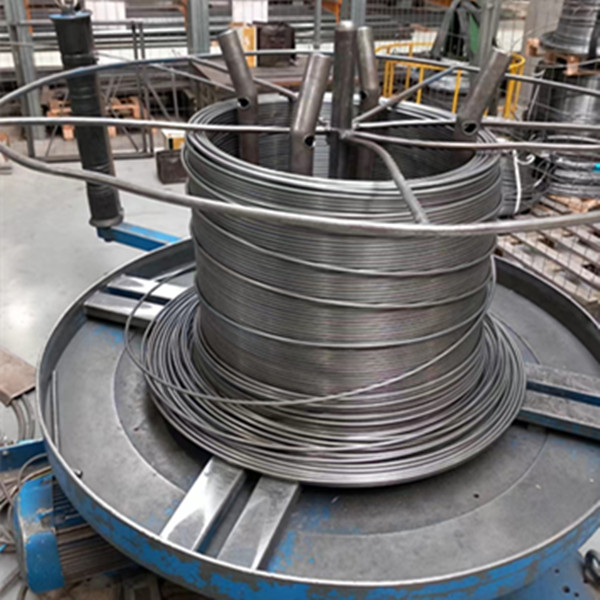
Image: Custom cold drawn steel wire solutions ready for specialized industrial applications.
Whether it's for a high-volume production line demanding absolute consistency or a niche application requiring a unique wire specification, our commitment to flexible manufacturing and technical support ensures that our Cold-Drawn Bright Wire Nail Wire, and other cold drawn steel wire products, are perfectly aligned with client needs, optimizing both process and performance.
Real-World Applications and Success Stories (Experience)
The true testament to the quality and versatility of Cold-Drawn Bright Wire Nail Wire and other forms of cold drawn steel wire lies in their successful deployment across diverse industrial sectors. Our extensive experience in providing these materials has equipped us with a deep understanding of their practical applications and the tangible benefits they deliver to our clients. Below are illustrative application cases and insights into how our products address real-world challenges, culminating in enhanced performance and operational efficiency.
Application Case 1: High-Volume Production of Bright Wire Nails
A leading North American fastener manufacturer faced challenges with inconsistent wire feeding and premature die wear in their high-speed nail-making machines, leading to frequent downtime and reduced output of bright wire nails. Upon reviewing their wire supply, it was determined that variations in wire diameter and surface finish were the root cause. We supplied them with our Cold-Drawn Bright Wire Nail Wire, engineered with extremely tight diameter tolerances and a superior bright finish.
- Result: The client reported a 15% increase in production line uptime, a 20% reduction in die replacement frequency, and a noticeable improvement in the consistency and aesthetic quality of their finished bright wire nails. This direct impact on their operational efficiency significantly boosted their profitability and market competitiveness.
Application Case 2: Precision Springs for Automotive Seating Systems
An automotive tier-one supplier required cold drawn steel wire for manufacturing complex seat suspension springs. These springs needed to exhibit exceptional fatigue resistance and maintain their elastic properties over millions of cycles under varying loads. Initial trials with conventional wire resulted in premature spring failure and unacceptable levels of sag.
- Solution: We provided a customized cold drawn steel wire specifically treated for high fatigue applications, with carefully controlled carbon content and a tailored heat treatment process.
- Result: The client's springs passed all rigorous automotive durability tests, extending the expected service life of the seating system components by over 30% and significantly enhancing passenger comfort and safety. This led to a long-term supply partnership.
Application Case 3: Reinforcement Mesh for Pre-Fabricated Concrete Elements
A manufacturer of pre-cast concrete panels for modular construction sought a reliable source of high-strength cold drawn steel wire for their welded wire mesh. The wire needed consistent weldability and high tensile properties to ensure the structural integrity of the concrete elements. Inconsistent strength led to concerns about meeting building codes and structural performance.
- Solution: We supplied cold drawn steel wire with certified tensile strength and excellent chemical consistency, optimized for automated welding processes.
- Result: The client experienced a marked reduction in weld failures and improved overall quality of their concrete reinforcement mesh. This allowed them to meet stringent construction standards more reliably and reduced rework, speeding up their production cycles.
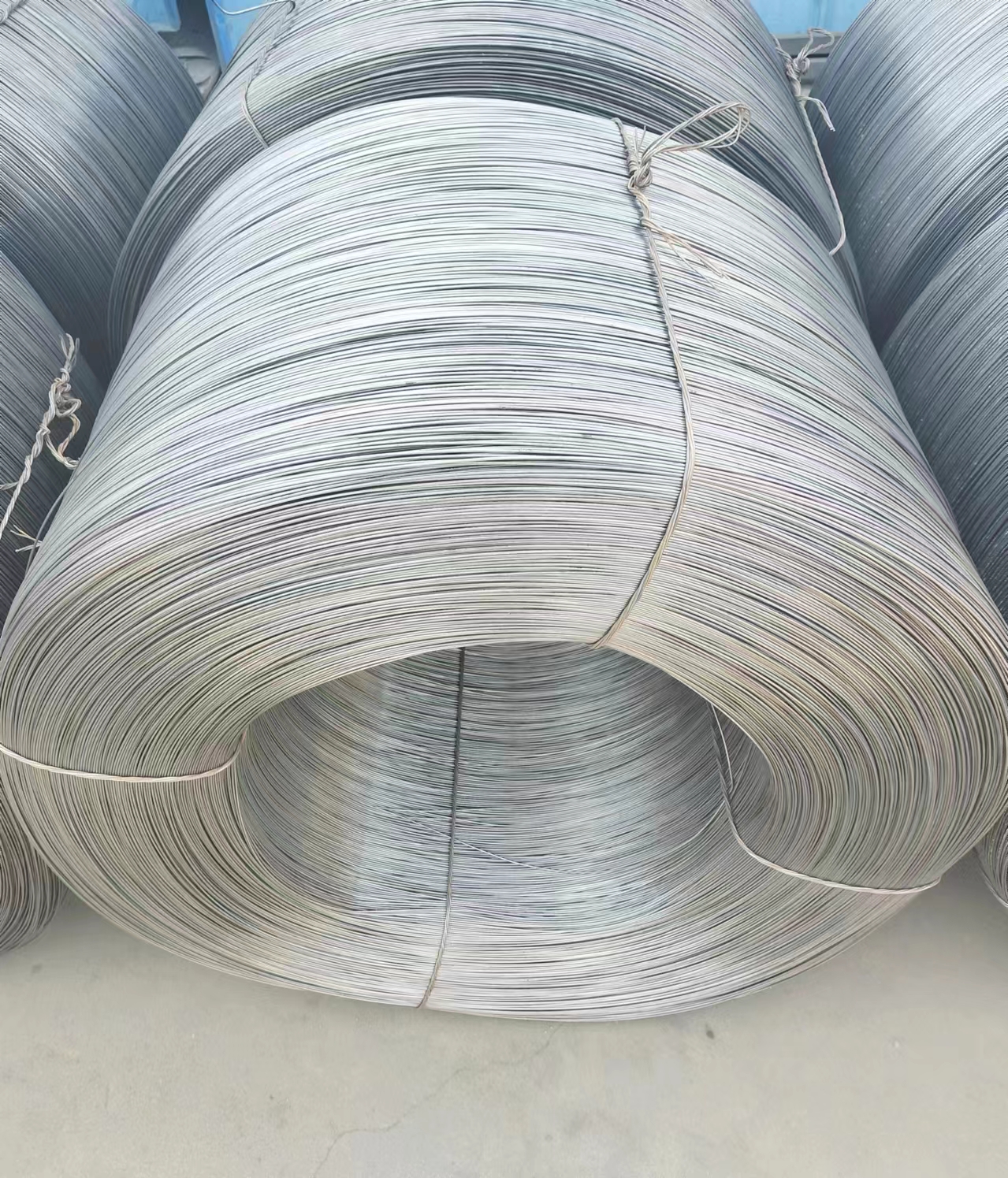
Image: Rigorous quality control measures ensuring peak performance of cold drawn steel wire in all applications.
Client Feedback and Service Approach:
"Partnering with Lanyewiremesh for our Cold-Drawn Bright Wire Nail Wire supply has been a game-changer. Their technical team's understanding of our nail-making processes allowed them to recommend a wire specification that significantly reduced our downtime and material waste. The consistency of their product is unmatched in the industry, directly contributing to the superior quality of our bright wire nails." – Production Manager, Major Fastener Manufacturer
These cases underscore our commitment not just to supplying high-quality cold drawn steel wire, but also to acting as a strategic partner, providing expert consultation and responsive support to ensure our clients achieve their operational and product performance goals. Our service experience is built on a foundation of solving complex material challenges with tailored, reliable solutions.
Assuring Quality and Building Trust (Authoritativeness & Trustworthiness)
In the B2B sector, trust is not merely a virtue; it is a fundamental requirement. For suppliers of critical materials like cold drawn steel wire, establishing and maintaining trustworthiness hinges on demonstrable quality assurance, adherence to industry standards, transparent processes, and unwavering customer support. Our commitment to these principles is embedded in every stage of our operations, from raw material sourcing to final delivery of Cold-Drawn Bright Wire Nail Wire.
Comprehensive Certifications and Compliance:
Our manufacturing facilities and processes are rigorously certified to international quality management standards, providing an external validation of our commitment to excellence:
- ISO 9001: This certification signifies our adherence to a globally recognized quality management system, ensuring consistent product quality, continuous improvement, and customer satisfaction. It dictates strict control over every phase of production, from initial design and raw material procurement to manufacturing and after-sales service.
- ASTM & Other Relevant Standards Compliance: All our cold drawn steel wire products, including Cold-Drawn Bright Wire Nail Wire, are manufactured in strict accordance with relevant ASTM specifications (e.g., ASTM A82, ASTM F1667 for nail wire properties) and other national/international standards as required by client specifications. Compliance is verified through rigorous internal and third-party testing.
- Traceability: We maintain comprehensive traceability records for all our products, allowing for batch-specific tracking from the initial steel melt to the final wire coil. This ensures accountability and rapid identification of material properties for any given shipment.
Rigorous Testing Protocols and Quality Control:
Every batch of cold drawn steel wire undergoes a series of stringent tests to verify its mechanical properties, chemical composition, and dimensional accuracy:
- Tensile Testing: Measures the wire's ultimate tensile strength, yield strength, and elongation according to ISO 6892-1 or ASTM E8.
- Hardness Testing: Rockwell or Vickers hardness tests are performed to ensure the wire meets specified hardness ranges, crucial for formability and driveability (e.g., for bright wire nails).
- Chemical Analysis: Spectrometric analysis verifies the precise chemical composition of each wire batch against material specifications.
- Dimensional Inspection: High-precision micrometers and laser gauges are used to measure wire diameter and roundness, ensuring compliance with tight tolerances.
- Surface Quality Inspection: Visual and eddy current testing methods detect surface defects such as cracks or seams that could compromise performance.
- Bend/Wrap Tests: Assess the wire's ductility and ability to withstand coiling or bending without fracturing.
Transparent Delivery Cycle and Robust Warranty:
- Delivery Cycle: We provide clear, realistic lead times for all orders, factoring in production schedules, customization requirements, and logistics. Our supply chain is optimized for efficiency, minimizing potential delays. For standard Cold-Drawn Bright Wire Nail Wire, typical lead times range from 3-5 weeks from order confirmation, depending on volume and current production queue. Expedited options are available for urgent requirements.
- Quality Assurance & Warranty: We stand behind the quality of our cold drawn steel wire products with a comprehensive quality assurance policy and warranty. In the unlikely event of material defects related to manufacturing or non-compliance with agreed specifications, we commit to replacing the material or providing a suitable resolution. Specific warranty terms are detailed in our sales agreements, typically covering materials for a period of 12 months from delivery under normal usage conditions.
Dedicated Customer Support:
- Technical Consultation: Our team of metallurgical engineers and product specialists is available to provide expert advice during the pre-sales phase, helping clients select the optimal cold drawn steel wire for their specific applications and overcome technical challenges.
- After-Sales Support: We offer responsive after-sales support, addressing any questions or concerns that may arise post-delivery, from technical troubleshooting to reordering assistance. Our goal is to ensure long-term satisfaction and seamless integration of our materials into your processes.
- Feedback Loop: We actively solicit customer feedback to continually improve our products and services, embodying the principle of continuous improvement central to our ISO 9001 certification.
Frequently Asked Questions (FAQ)
General Questions About Cold-Drawn Steel Wire
Q1: What is the primary difference between cold-drawn and hot-rolled steel wire?
A1: The key difference lies in the processing temperature. Hot-rolled wire is formed at high temperatures (above recrystallization point), resulting in a rougher surface and looser dimensional tolerances. Cold drawn steel wire is processed at room temperature, which plastically deforms the steel, leading to increased tensile strength, superior surface finish, and much tighter dimensional accuracy. It also changes the grain structure and reduces ductility unless annealed.
Q2: What are the main benefits of using cold-drawn steel wire for manufacturing?
A2: Key benefits include enhanced mechanical properties (higher tensile and yield strength), superior surface finish, excellent dimensional accuracy, improved machinability, and better fatigue resistance. These properties translate into more reliable and efficient manufacturing processes, higher quality end products like bright wire nails, and potential material savings.
Q3: How does cold drawing improve the wire's structural integrity?
A3: Cold drawing causes strain hardening and refines the steel's grain structure by elongating it in the drawing direction. This denser, more uniform grain structure, combined with reduced internal defects and improved surface quality, significantly enhances the wire's overall strength, hardness, and fatigue life compared to its hot-rolled counterpart.
Questions Specific to Cold-Drawn Bright Wire Nail Wire
Q4: Why is a "bright" finish important for nail wire?
A4: A bright, smooth, and clean surface finish is crucial for bright wire nails for several reasons: it ensures smooth feeding and reduced friction in high-speed nail-making machines, preventing jams and increasing production efficiency; it provides an aesthetically pleasing appearance for the finished nails; and it allows for better adhesion of any subsequent coatings (e.g., galvanizing) if required.
Q5: Can Cold-Drawn Bright Wire Nail Wire be customized for different nail types?
A5: Absolutely. We offer extensive customization. We can adjust the wire's diameter, tensile strength, and ductility to suit various nail types (e.g., common nails, box nails, finishing nails, roofing nails) and different heading requirements. This ensures optimal performance for specific nail manufacturing processes and end-use applications.
Q6: What material grades are typically used for Cold-Drawn Bright Wire Nail Wire?
A6: Commonly, low carbon steel grades like SAE 1006, 1008, or 1010 are used. These grades offer a good balance of strength and ductility, making them ideal for drawing and subsequent nail formation. Specific applications might call for slightly higher carbon content for increased hardness.
Ordering and Logistics
Q7: What is the typical lead time for an order of Cold-Drawn Bright Wire Nail Wire?
A7: Lead times can vary based on order volume, specific customization requirements, and current production schedules. For standard products, typical lead times range from 3 to 5 weeks from order confirmation. We recommend contacting our sales team for precise lead time estimates for your specific requirements.
Q8: Do you provide quality certifications and test reports with your shipments?
A8: Yes, absolutely. Every shipment is accompanied by a Material Test Report (MTR) or Certificate of Conformance, detailing the chemical composition, mechanical properties, and compliance with relevant industry standards (e.g., ASTM, ISO). This ensures full transparency and traceability for our clients.
Conclusion: The Future of Cold-Drawn Steel Wire and Our Commitment
The journey through the intricate world of cold drawn steel wire underscores its critical and evolving role in modern industrial applications. From its meticulously controlled manufacturing process, which imparts superior mechanical properties and surface finishes, to its broad spectrum of applications ranging from high-performance automotive components to the ubiquitous bright wire nails, cold drawn steel wire stands as a testament to precision engineering and material science.
The industry is continually pushing boundaries, with trends pointing towards even tighter tolerances, increased demand for specialized properties (e.g., enhanced corrosion resistance, higher fatigue strength), and sustainable manufacturing practices. As industries strive for lighter, stronger, and more durable components, the demand for advanced cold drawn steel wire solutions will only intensify.
Our commitment at Lanyewiremesh is to remain at the forefront of this evolution. By combining deep technical expertise with advanced manufacturing capabilities and a client-centric approach, we are dedicated to providing Cold-Drawn Bright Wire Nail Wire and other cold drawn steel wire products that not only meet but exceed the most stringent industry standards and client expectations. We aim to be your trusted partner in material supply, offering tailored solutions, unwavering quality, and comprehensive support to drive your operational success and innovation into the future.
References
- Callister, W. D., & Rethwisch, D. G. (2018). Materials Science and Engineering: An Introduction (10th ed.). John Wiley & Sons.
- Dieter, G. E. (2013). Mechanical Metallurgy (3rd ed.). McGraw-Hill Education.
- ASM International. (2002). ASM Handbook, Volume 14A: Metalworking: Bulk Forming. ASM International.
- American Society for Testing and Materials (ASTM) Standards. (Various).
- International Organization for Standardization (ISO) Standards. (Various).



